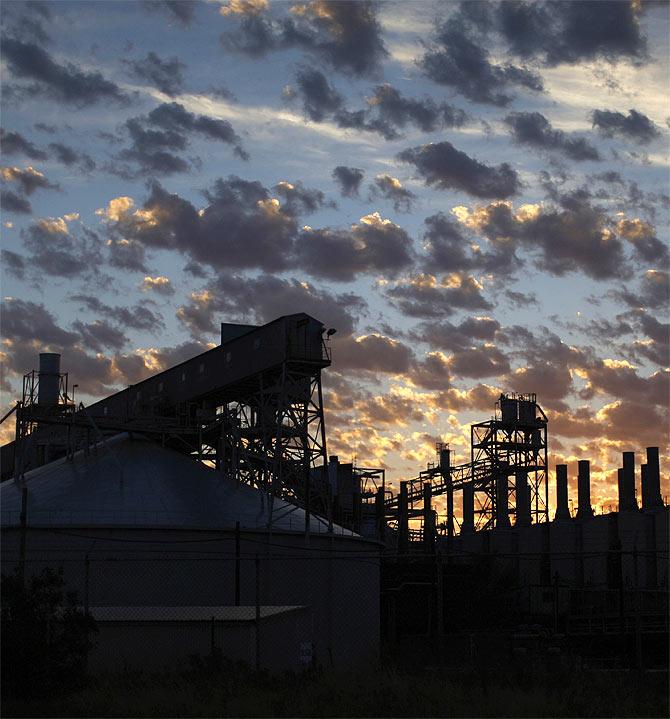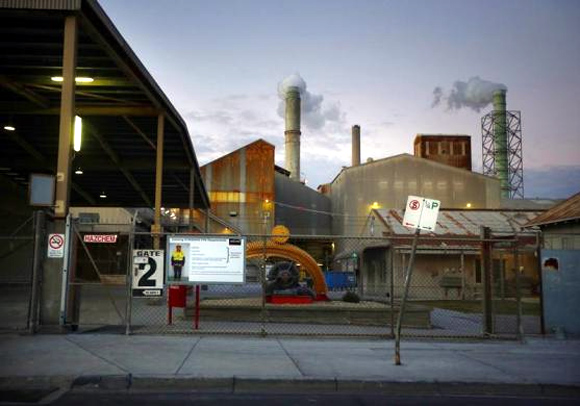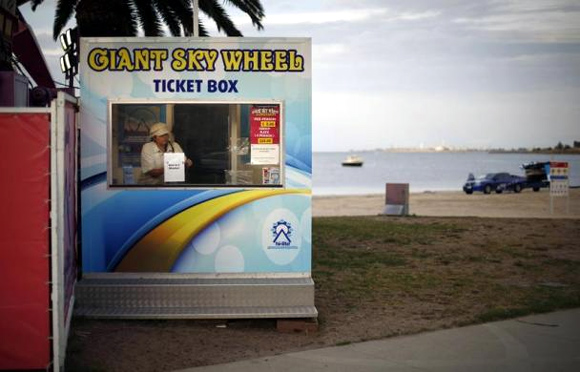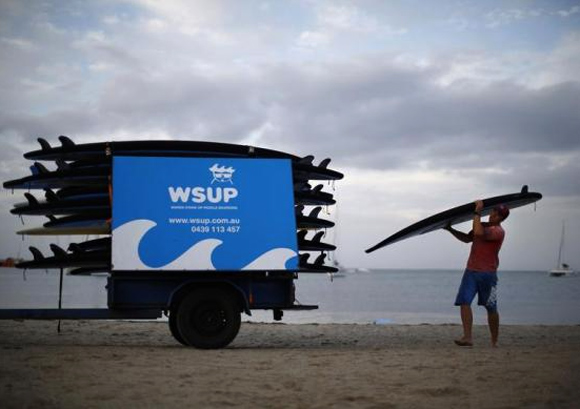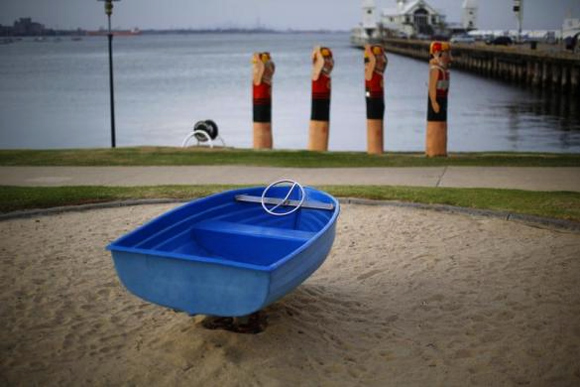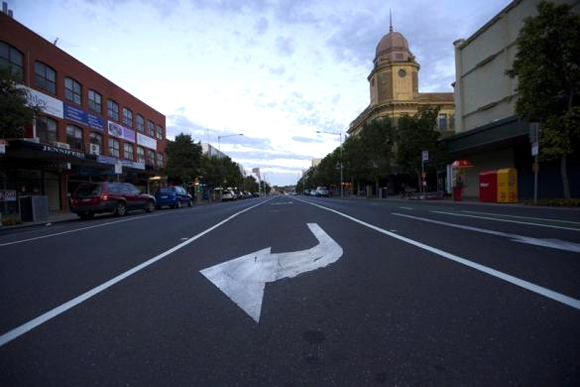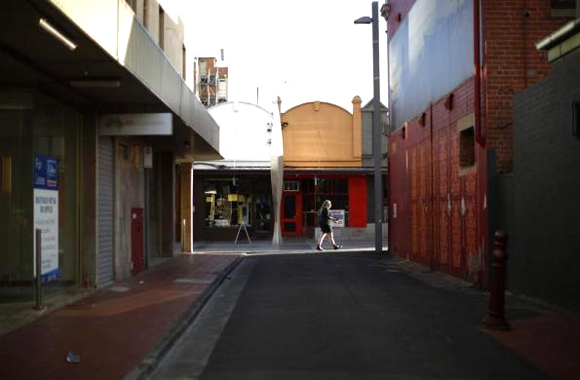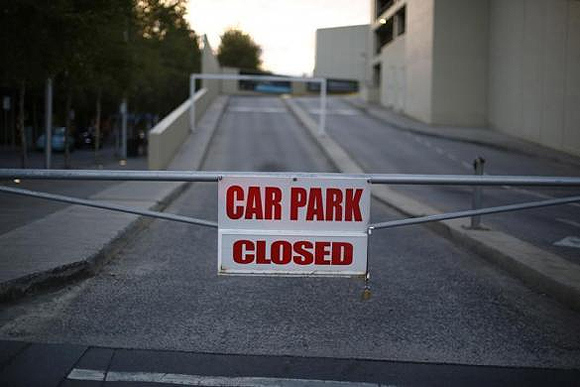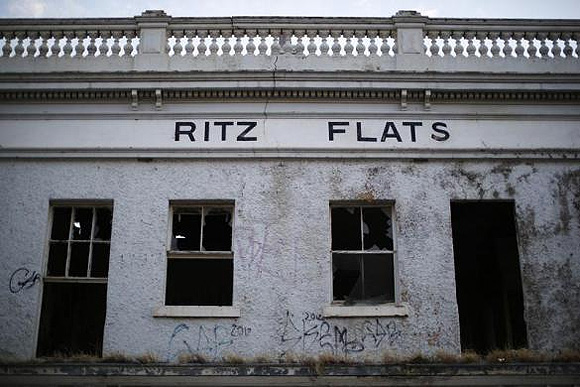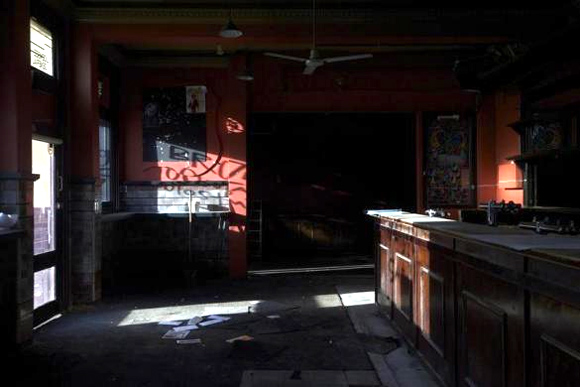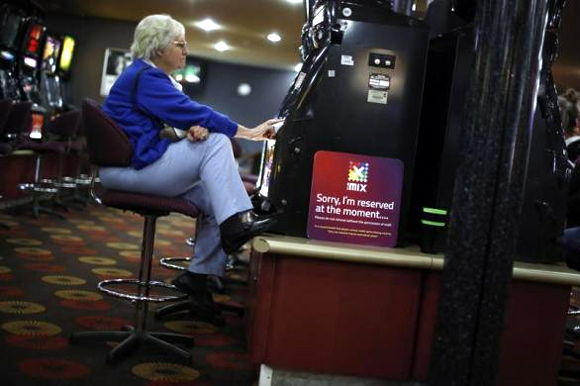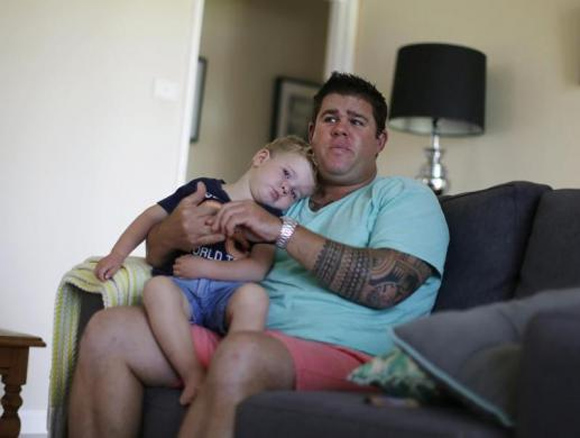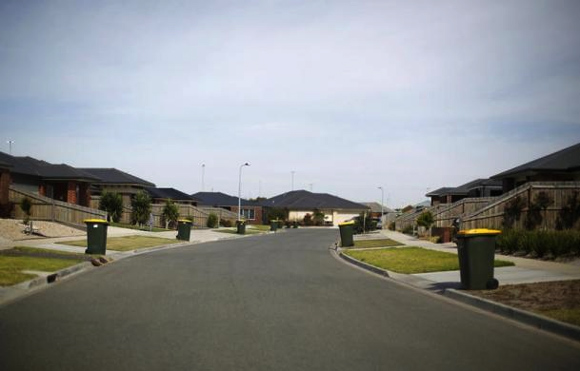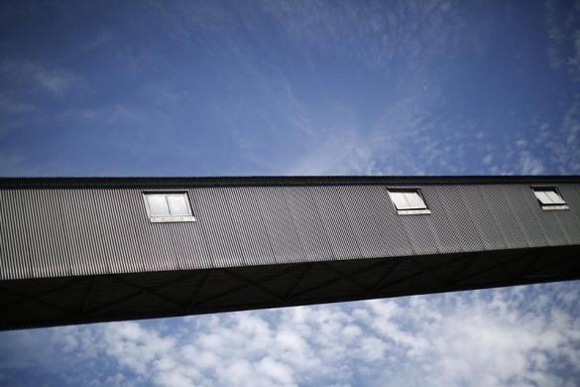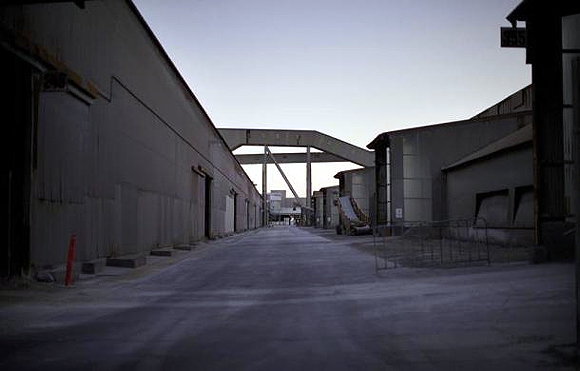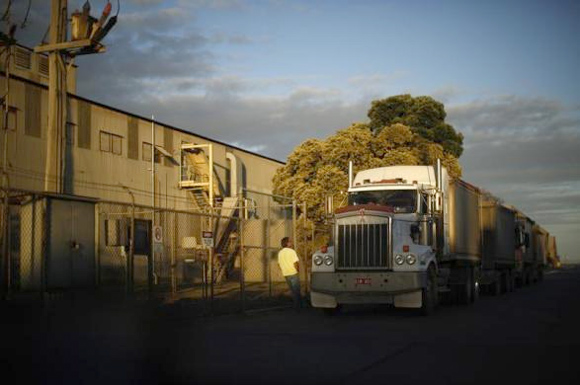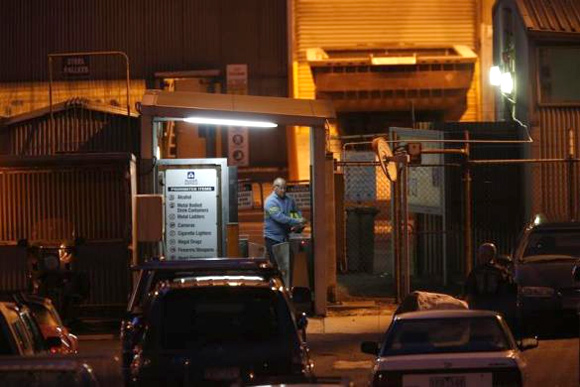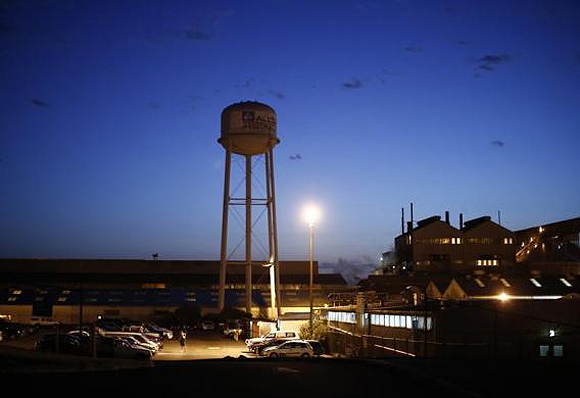 | « Back to article | Print this article |
Will this city be Australia's Silicon Valley or its Detroit?
Manufacturing has been declining in importance in Australia for decades as successive governments rolled back trade barriers and exposed firms to intense foreign competition.
Behind closed doors at City Hall, Geelong's eccentric mayor sits searching for an analogy to put into perspective the punishing job losses battering his city.
Darryn Lyons runs his fingers through his blonde mohawk - the man leading this Australian manufacturing hub was once a paparazzo and reality TV star in Britain - before settling on a way to describe how the departure of companies such as Alcoa Inc and Ford Motor Co. will hurt.
(Additional reporting by Wayne Cole)
Click NEXT to read more…
Will this city be Australia's Silicon Valley or its Detroit?
"I relate it a little bit to the prehistoric age, really. The dinosaurs have been going throughout the world for the last seven or eight years," he said, referring to the struggle to adapt in the face of growing competition from Asia and then the global financial crisis.
Geelong, 75 km (46 miles) south of Melbourne, is a microcosm of the economic crossroads at which Australia stands.
Click NEXT to read more…
Will this city be Australia's Silicon Valley or its Detroit?
The steps authorities and industry leaders take here - securing next-generation defence contracts or incubating carbon fibre production - will be closely watched to see if the city becomes Australia's Silicon Valley or its Detroit.
Australia largely avoided the turmoil of the global financial crisis by leveraging Chinese demand for its abundant natural resources.
Click NEXT to read more…
Will this city be Australia's Silicon Valley or its Detroit?
The mining boom, however, is slowing and a high Australian dollar has helped drive its manufacturing base overseas.
The announcement last month by U.S. aluminium producer Alcoa that it would close its Point Henry smelter, putting 600 people out of work, was just the latest in what Lyons has called a "tsunami" of manufacturing job losses across the country.
Click NEXT to read more…
Will this city be Australia's Silicon Valley or its Detroit?
Geelong, home to nearly 180,000 people, is now wrestling with the question facing much of Australia: what happens when there is neither a resources boom nor a substantial manufacturing sector.
Click NEXT to read more…
Will this city be Australia's Silicon Valley or its Detroit?
Factory Ghosts
Alcoa's hulking Point Henry smelter, located on a desolate promontory crisscrossed by humming high-voltage cables, feels haunted by the ghosts of manufacturing past.
Click NEXT to read more…
Will this city be Australia's Silicon Valley or its Detroit?
Behind the plant lies the empty Moolap salt works. Across the bay sits AvalonAirport, where national carrier Qantas in November announced the closure of a maintenance facility, shedding 300 jobs.
The decision last year by Ford to cease manufacturing in Australia by 2016 will take 600 jobs from Geelong and, together with similar moves by Toyota and General Motors in other parts of the country, signalled the end of Australia's rich history of car manufacturing.
Click NEXT to read more…
Will this city be Australia's Silicon Valley or its Detroit?
Alcoa's decision to shut the 50-year-old smelter was taken after a two-year review found no prospect of it becoming financially viable.
Australia was once one of the world's biggest aluminium producers, but has slipped to fifth place as production costs climbed and prices dropped.
By some estimates, more than 10 percent of Geelong's population will be affected by the job losses, a fact made evident by the empty shopfronts dotting the city and the "For Sale" signs sprouting across its suburbs.
Click NEXT to read more…
Will this city be Australia's Silicon Valley or its Detroit?
Adam Oates, 42, has worked at Point Henry for nearly his entire adult life. His father and father-in-law worked for Ford, he said in an interview at his home, and he always assumed he would have the sort of job security they enjoyed.
Click NEXT to read more…
Will this city be Australia's Silicon Valley or its Detroit?
Lately, he said, more and more locals have been comparing Geelong to Detroit, the American city famous for the blight and urban decay brought on by the crisis in its automobile industry.
Click NEXT to read more…
Will this city be Australia's Silicon Valley or its Detroit?
"The community in Geelong is shattered," Oates said. "Nobody's got an idea where we're going, what we're gonna do next ... the comparison to Detroit has been brought up a lot."
"I reckon it's gonna be a ghost town."
Click NEXT to read more...
Will this city be Australia's Silicon Valley or its Detroit?
"Giddy Up", says Mayor
Manufacturing has been declining in importance in Australia for decades as successive governments rolled back trade barriers and exposed firms to intense foreign competition.
With a population of just 23 million, Australia never had the domestic scale to compete with industrial giants such as China or Japan or match the low wages of other fast-growing economies in Asia.
Click NEXT to read more...
Will this city be Australia's Silicon Valley or its Detroit?
"We can't compete with Thailand making cars. Fact. We've known that for a long time. We can't compete with South Korea making TVs. We've known that for a long time," Lyons said.
Click NEXT to read more...
Will this city be Australia's Silicon Valley or its Detroit?
Lyons, 48, became mayor in November after a prominent media career in Britain.
His smiling visage now beams down from a billboard on the side of the highway, greeting visitors to Geelong with his slogan for revitalizing the city: "giddy up!"
Click NEXT to read more...
Will this city be Australia's Silicon Valley or its Detroit?
Business interests initially opposed his candidacy, even taking out advertisements in a local newspaper warning residents against him.
But his media profile and dedication to securing investment in defence contracts and tourism have won Lyons many admirers.
Click NEXT to read more...
Will this city be Australia's Silicon Valley or its Detroit?
From sheep shed to cutting-edge research
Where Australia does have a huge natural advantage is in resources, making it the world's second largest producer of iron ore, gold, lead and zinc and the fourth largest for silver and black coal.
Massive investment in liquefied natural gas should make it the biggest exporter by 2017.
Click NEXT to read more...
Will this city be Australia's Silicon Valley or its Detroit?
Value-added products such as food, tourism and education are seen as huge growth opportunities, as the investment phase of the mining boom dies down over the next three years, leaving a gaping hole in the national economy.
Click NEXT to read more...
Will this city be Australia's Silicon Valley or its Detroit?
The ups and downs of Geelong's economy have long mirrored those of the country. It rose and fell in the 19th century on booms in wool and gold, before transitioning into manufacturing in the 20th century.
Click NEXT to read more...
Will this city be Australia's Silicon Valley or its Detroit?
Jane den Hollander's office at DeakinUniversity in Geelong is illustrative of that change - it started life as a sheep shed and is now a part of the university's Australian Future Fibres Research and Innovation Centre.
Click NEXT to read more...
Will this city be Australia's Silicon Valley or its Detroit?
The centre is a A$102 million research hub and home to a pilot plant called Carbon Nexus that Deakin says is the world's first research plant capable of producing large scale amounts of industrial and aerospace quality carbon fibre.
Click NEXT to read more...
Will this city be Australia's Silicon Valley or its Detroit?
Hollander, Deakin's vice rector, identified agriculture as a short-term possibility for those without advanced skills in Geelong before mooting education, health care and information technology as sectors being promoted by the university.
Click NEXT to read more...
Will this city be Australia's Silicon Valley or its Detroit?
"The longer term opportunities are these high-tech, IT, light weighting, energy-saving type things that numbers of companies are doing and can be exploited quite significantly," she said.
Click NEXT to read more...
Will this city be Australia's Silicon Valley or its Detroit?
Touting Geelong's manufacturing background, Lyons is lobbying the Australian army to build its next generation combat vehicle in the city.
Click NEXT to read more...
Will this city be Australia's Silicon Valley or its Detroit?
The Land 400 is a A$10 billion project intended to produce a suite of new armoured vehicles, which the army describes as the largest, most expensive and most complex major capability project in its history.
Click NEXT to read more..
Will this city be Australia's Silicon Valley or its Detroit?
Competition between Australia's states - especially those such as South Australia and Victoria that have been hit with major losses in manufacturing - is already fierce.
Click NEXT to read more...
Will this city be Australia's Silicon Valley or its Detroit?
For Damian Young, a 39-year-old Alcoa worker, the project feels like a case of too little, too late. A once certain future for himself and his two young sons now seems anything but, he says.
"It's like going into a dark tunnel," he said. "You don't know where it's going to end."

© Copyright 2025 Reuters Limited. All rights reserved. Republication or redistribution of Reuters content, including by framing or similar means, is expressly prohibited without the prior written consent of Reuters. Reuters shall not be liable for any errors or delays in the content, or for any actions taken in reliance thereon.
